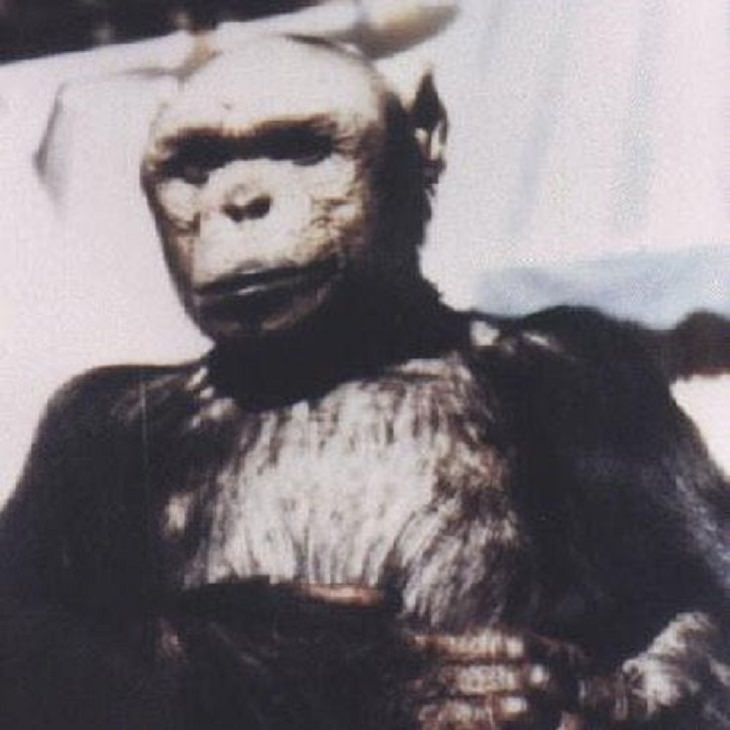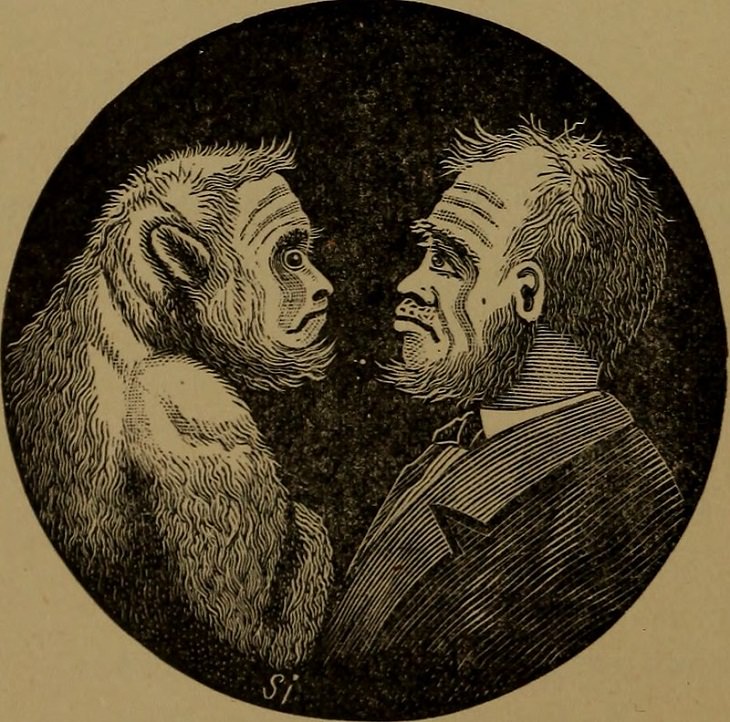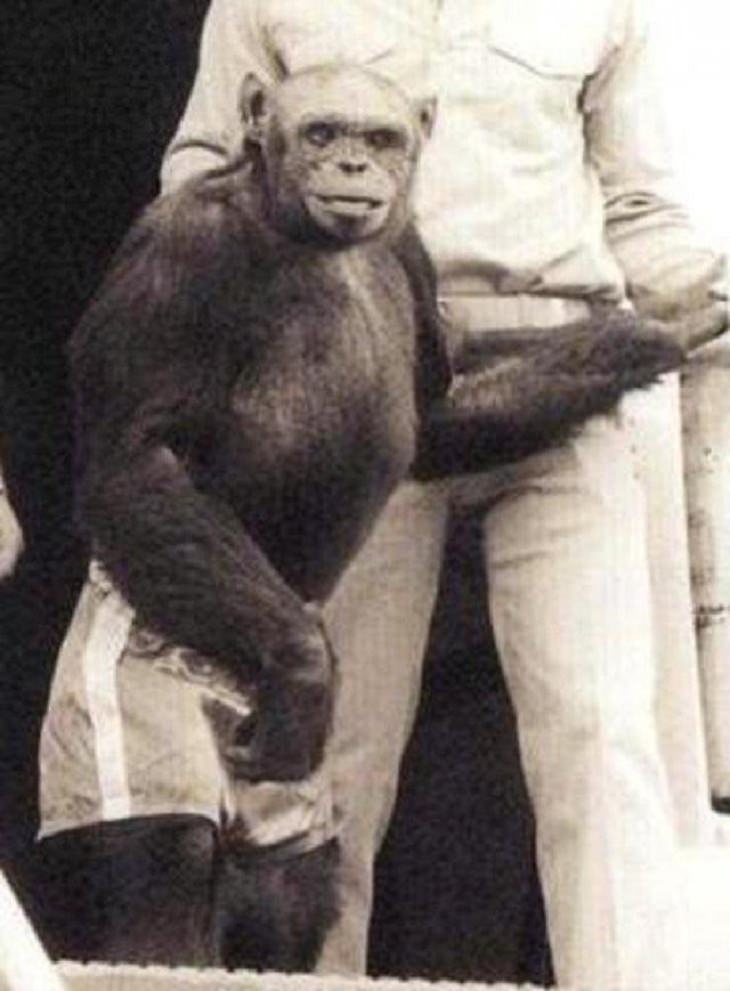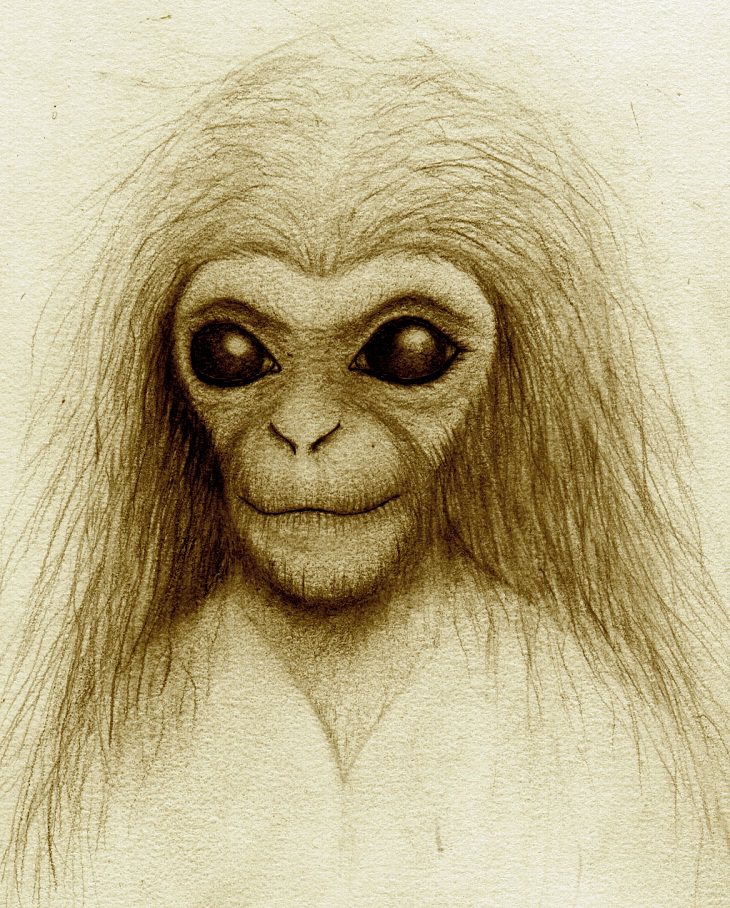You might have heard about different animal hybrids or seen their fascinating pictures on the internet; they aren’t exactly a new phenomenon, after all. While crossbreeding between different species and breeds usually doesn’t occur in nature, humans have intervened to create many interesting hybrids over the years like the Liger (Male Lion + Female Tiger), the Zonkey (Zebra + Donkey), the Grolar Bear (Polar Bear + Brown Bear), and even the Wholphin (Male False Killer Whale + Female Bottlenose Dolphin).
Related: You Have to See These 18 Hybrid Animals to Believe Them
But have you ever heard of a ‘Humanzee’? The name refers to a human-chimp crossbreed. Claims have been made in the past that such a creature was successfully created back in the 1920s and that there were several more attempts in the decades to follow. But is that really possible? Let’s learn a little more about the legend of the humanzees.
What is a Humanzee?
Oliver, the chimp who was thought to be a 'Humanzee' (Image source:
Reddit)
It's a well-known fact that humans and chimpanzees are closely related. Scientists say that chimps and their close relatives the bonobos are both humans' closest-living relatives, and each of them shares around 98.7% of our DNA.
Therefore, it’s not totally surprising that someone would think of creating a human-chimp hybrid. But did an experiment like this actually happen? Evolutionary psychologist Gordon G. Gallup, Jr certainly believes so.
"One of the most interesting cases involved an attempt which was made back in the 1920s in what was the first primate research center established in the US in Orange Park, Florida," Gallup has been quoted as saying to The Sun. Gallup, who gained fame for his mirror self-recognition experiments with animals in the 1970s, says that the researchers inseminated a female chimpanzee with human semen from an unrevealed donor. He further claims that the female chimp gave a successful birth and a healthy ‘humanzee’ was indeed born.
Apparently, after seeing the entity in front of them, the scientists were completely shaken. In the next few days, they were supposedly burdened by moral and ethical issues and the infant was eventually euthanized. Whether the researchers studied the creature after its birth or whether there was any evidence recorded on its behavior is unknown.
All of this sounds like a bizarre plot from a vintage sci-fi movie. Can any of it be true? According to Gallup he was told about this controversial experiment by “a credible scientist” who was also his mentor.
We may never know whether Gallup's claims are accurate, but the stories of humanzees aren’t exactly new. Apparently, experiments to create a hybrid animal that's half chimpanzee and half human have happened before as well.
The First Humanzee Experiment
An artist's impression of Ilya Ivanovich Ivanov with an ape (Image source:
Flickr)
The first recorded attempt to make a humanzee was done by Russian biologist Ilya Ivanovich Ivanov. An expert in the field of animal hybridization and artificial insemination, Ivanov had conducted several experiments on mixed-breed hybrid animals like the Zedonk (a hybrid of a zebra and a donkey) and a guinea pig- mouse.
In 1910, he presented his idea for a humanzee to the World Congress of Zoologists in Viena. He claimed that a hybrid between humans and chimpanzees would be possible in the future through artificial insemination and believed the experiment could be pulled off. Even though the scientific community was against such an experiment, believing it to be unethical, Ivanov was determined to go ahead with it. Documents show that in 1924, he submitted his proposals for a human-chimp hybridization experiment to the Soviet government and got the green signal.
Ivanov soon went to Africa and commenced work on his experiment. However, he failed to achieve a successful pregnancy in a female chimpanzee through artificial insemination with human sperm as none of the apes were mature enough to breed.
Ivanov didn’t give up and began considering the idea of inseminating human females with ape sperm. He was almost set to carry out this bizarre experiment in 1929 and even got five women volunteers for it, but the attempt was cut short as the intended male orangutan sperm donor died.
At this point, the Soviet government too believed that Ivanov had crossed the line and exiled him to Kazakhstan.
Other Experiments with Humanzees
Apart from that claimed experiment in Florida and the failed one by Ilya Ivanovich Ivanov, other attempts to create a humanzee were also undertaken decades later, although reports on them are largely unclear. The People’s Republic of China evidently made an attempt towards this in the 1960s but not much information is available about it.
According to the Chinese Academy of Sciences, another effort to impregnate a female chimpanzee with human sperm was made in China in 1981. But the animal died three months later due to health complications.
Oliver the chimpanzee (Image source:
Reddit)
Interestingly, a performing chimp called Oliver, brought to the US from Africa in the 1970s, was once suspected to be a human-chimp hybrid and caused a sensation in the scientific community. This was primarily because of his human-like appearance, his tendency to walk upright, and his unusual balding concurrent with human males. But genetic testing in the 1990s proved that Oliver was not a humanzee and was, in fact, a chimpanzee.
In 2021, a team of researchers led by French biologist Pierre Savatier revealed that they are attempting to create human-monkey chimeras. However, from what we know so far, the team was successful in growing an embryo consisting of 10 human cells and 250 monkey cells that could only survive for a week.
An artist's impression of a hypothetical chimpanzee-human hybrid (Image source:
Wikimedia Commons)
The ability of apes or monkeys to breed with humans is an interesting theory, even though it might appear unethical to many. And while we can’t confirm if Gallup's claims of a humanzee having been born in a Florida lab in the 1920s are true, we can bet that the concept of a living humanzee will continue to fascinate the scientific community. Who knows, they might even succeed one day in bringing one to this world. However, that is bound to create some serious psychological and biological implications.
Share this fascinating story with your friends and family!




